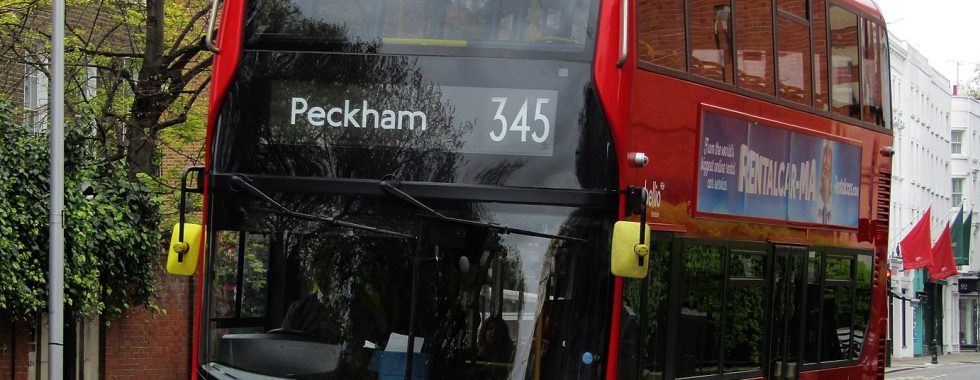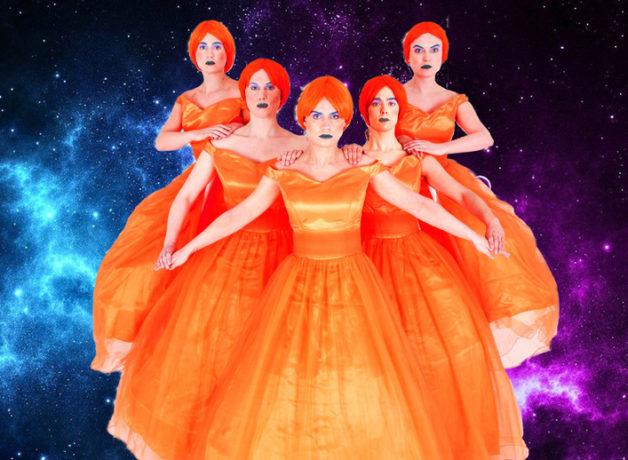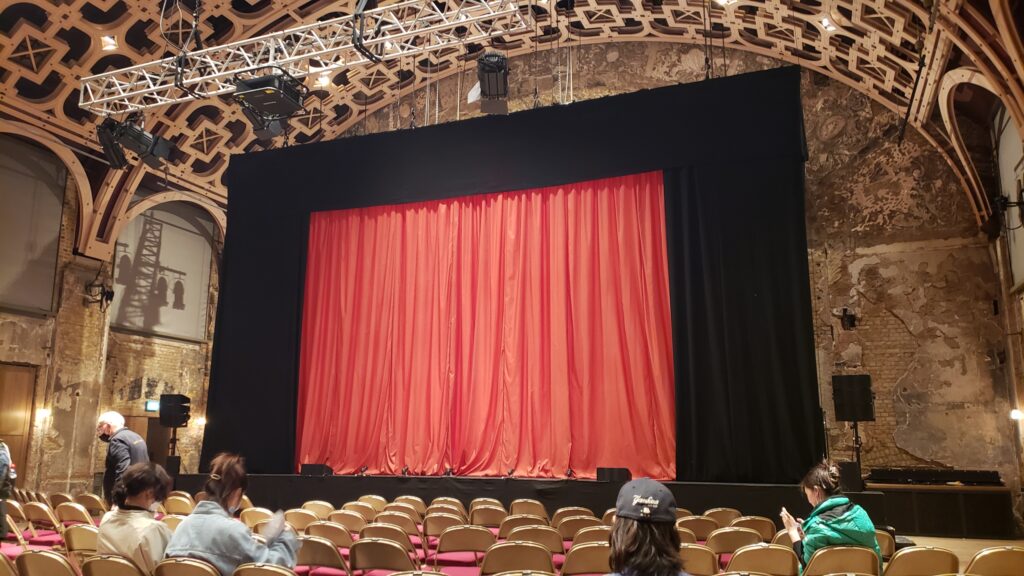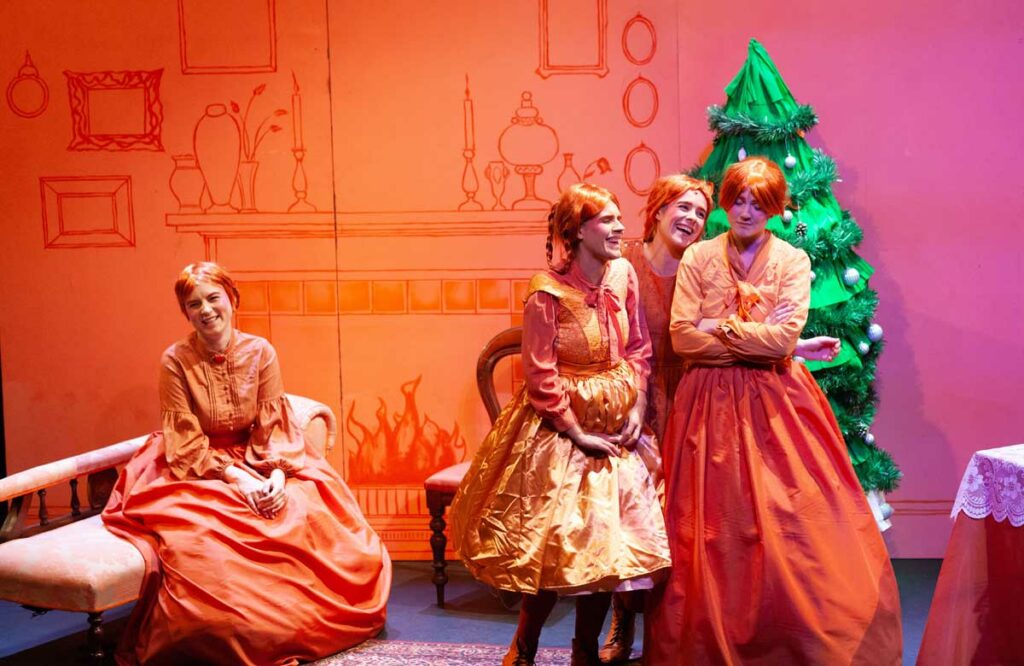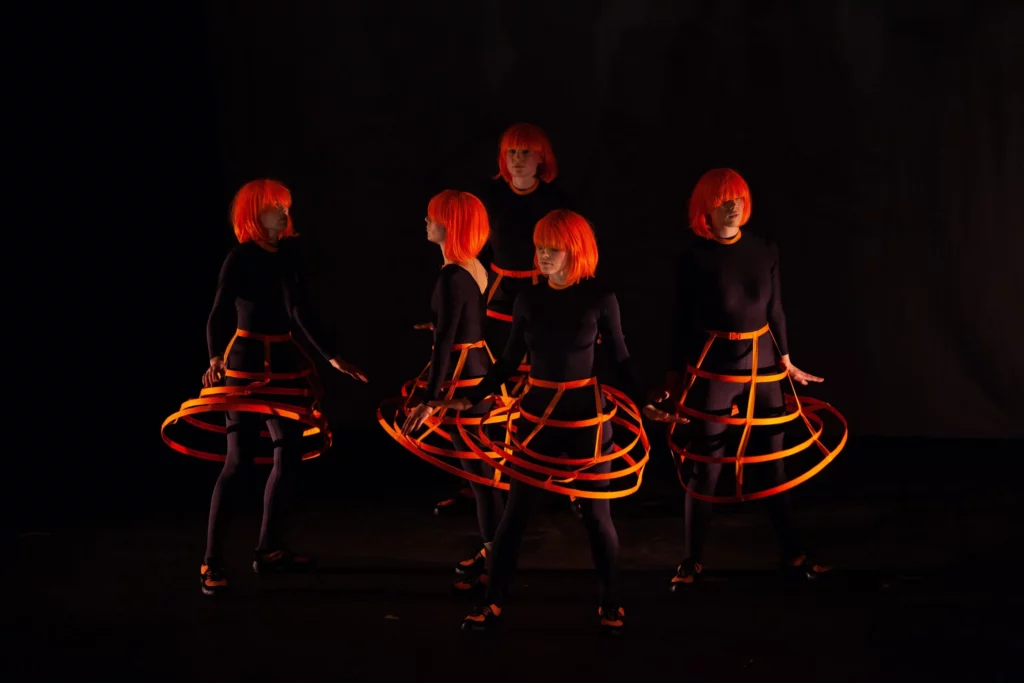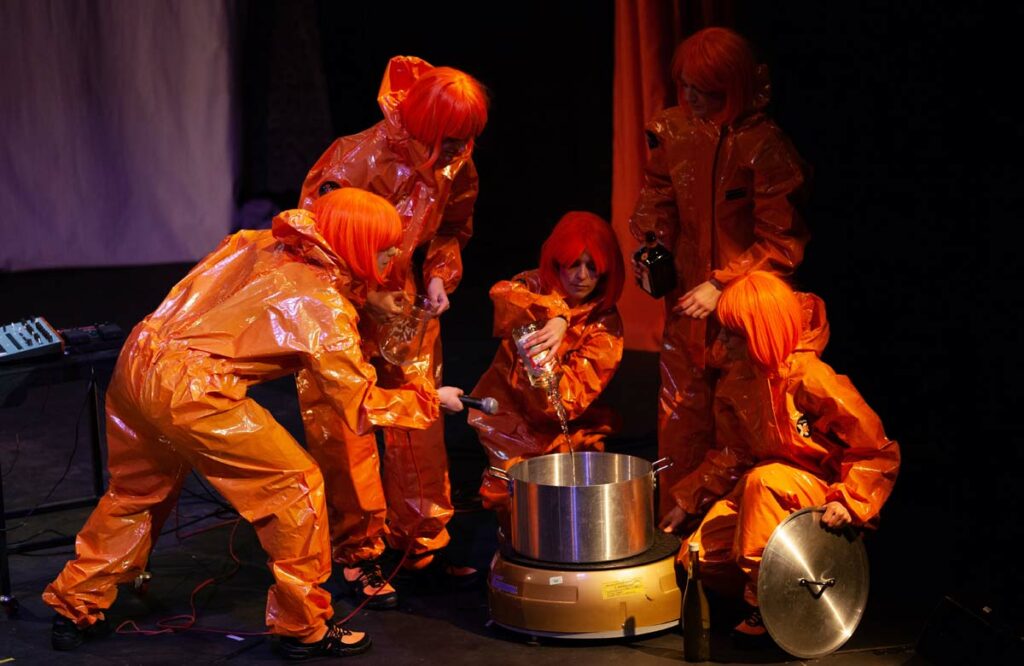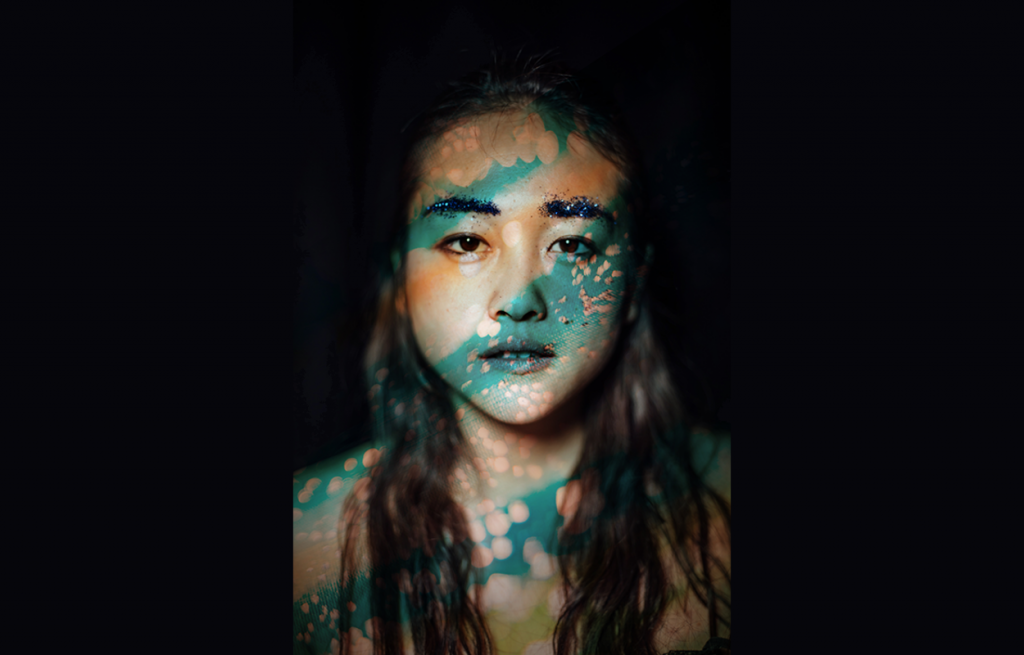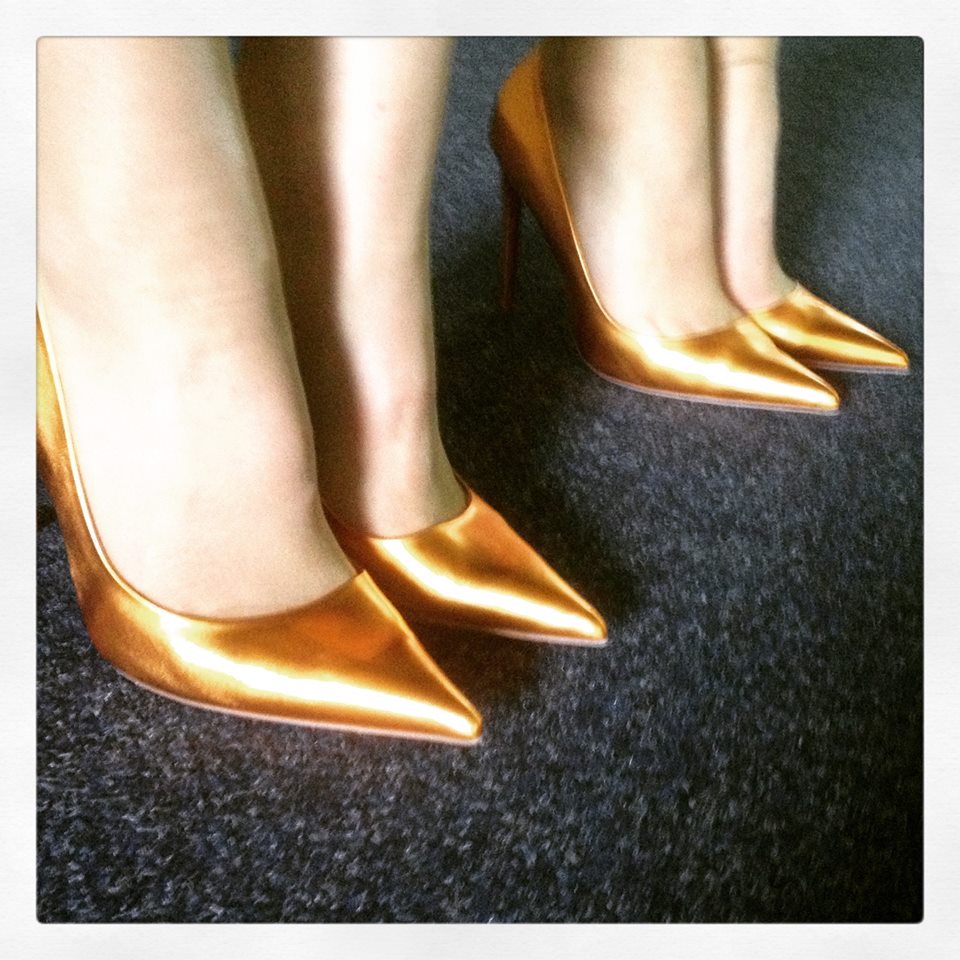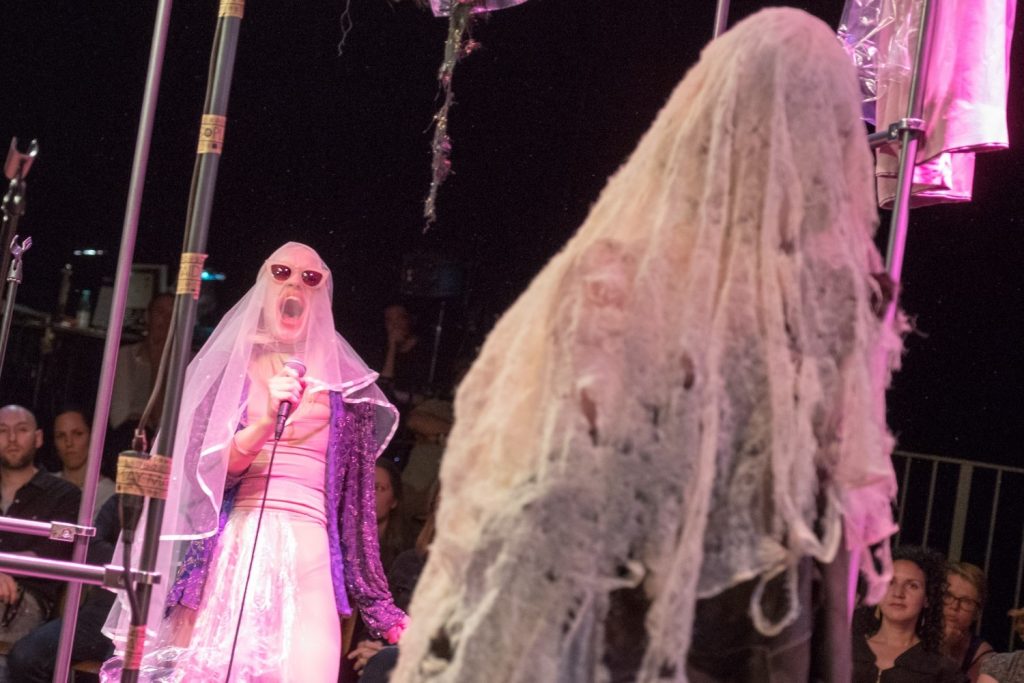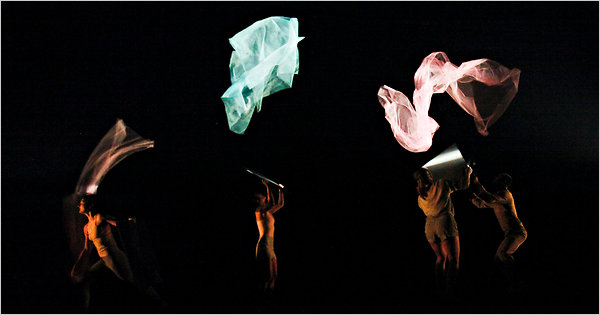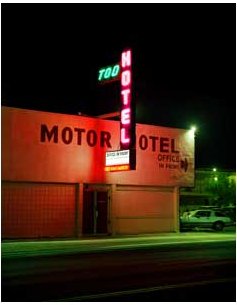The youth of Europe spoke today with a United voice. A voice at times strident, but more often hopeful. They scolded and coddled, preached and implored. They came from across the continent to speak together but separately. They appealed to our better angels, after reminding us we still have them. Mostly, however, they made clear that it is they who are our inheritors, and they shan’t be denied.
The European Parliament, you might ask; The British? Nee, I speak of An Odyssey, an audacious undertaking by Platform European Theatre Academies, PLETA. This group, along with ITS Festival, Europe by People, and others, brought together eight leading European Theatre schools for this production. Each academy produced a piece for an island from Homer’s tale of venture, nostalgia and return.
Our Odyssey began near a small dog park, next to a ferry launch, about a mile from Centraal Station, Het Stenen Hoofd. At the appointed hour a small squadron of brown-shirted youth arrive and start to bark orders at the audience. These students of Theatre Academy Helsinki TEAK put us on a forced march to Calypso, where we are ridiculed and cajoled, made to march in strict lines, then taken into small groups. Pawn finds himself with a group of 8, sitting around a refugee campfire, where our brown-shirt guide tells us that she will soon put us on a boat out of here, but first we are to partake of a brief ceremony; she is to make for us a pot of coffee, which we will share together, before never seeing each other again. As she prepares the pot of coffee over a propane stove, she sings us a Finnish song, and then explains the lyrics in English. They are of separation and finality.
This isn’t just any Odyssey, you see, This journey is informed by Europe’s current refugee crises. Here is a brief excerpt from the programme:
This project represents a unique connection between future actors, mixing cultures, languages and artistic expression into one vision; to create a performance that mirrors the humanitarian challenges we face today. Never before has the need for tolerance, openness, and respect felt more urgent than now. I believe that a better world is possible, and that anyone can contribute, regardless of religion, beliefs, colour of skin or sexual orientation.
-Andreas Koschinski Kvisgaard (Student Westerdal, Norway)
From our imaginary Calypso, we are led to a ferry, which takes us through Amsterdam harbour and deposits us on the banks by the Tolhuistuin cultural compound. This is where the rest of Homer’s islands will be. But first, along the way, we are provided wireless headphones (Sennheiser Outdoor Cinema, for the curious amongst you) through which we hear seabirds and music, voices and more. We are told a tale of Poseidon, how his bureaucratic duties as God of the sea are boring and wearying him, and how, finally, he lays down his trident and retires. This portion of the presentation is by Theaterakademie August Everding, Munich.
This overwhelmed yet bored Poseidon is based not on Homer, but Kafka. When we finish our journey, however, we are led into the Tolhuistuin compound where we are met by flashy, bikini-clad girls with selfie-sticks and few barriers. They in turn lead us to a boisterous man lounging is a small pool, where we are allowed to share in the Champagne. Suddenly a woman appears in the windows above us and launches into a speech about globalization and corporate responsibility. Inspired by the text of a speech given by Cor Herkstroter, former CEO of Royal Dutch Shell, the rhetoric here deplores government for demanding too much from corporations, and encourages it to get out of the way and let corporations do what’s best; “scrutinizes the Janus-faced Europe of today, whose values of openness and solidarity are being ground down by the very bureaucratic manchinery designed to protect it.” as the programme tells us.
Near the conclusion of the speech, some White Power nationalists filter through the crowd and commence to shout and chant. They sweep through the crowd and over to a small clearing, where they roust a refugee from a tent, and proceed to rough him up, under the gaze of a black-trenchcoat wearing religious figure. The refugee is finally thrown into a shallow grave, and that’s the end of the Cyclops, brought to us by Akademie Teatralna, Warsaw.
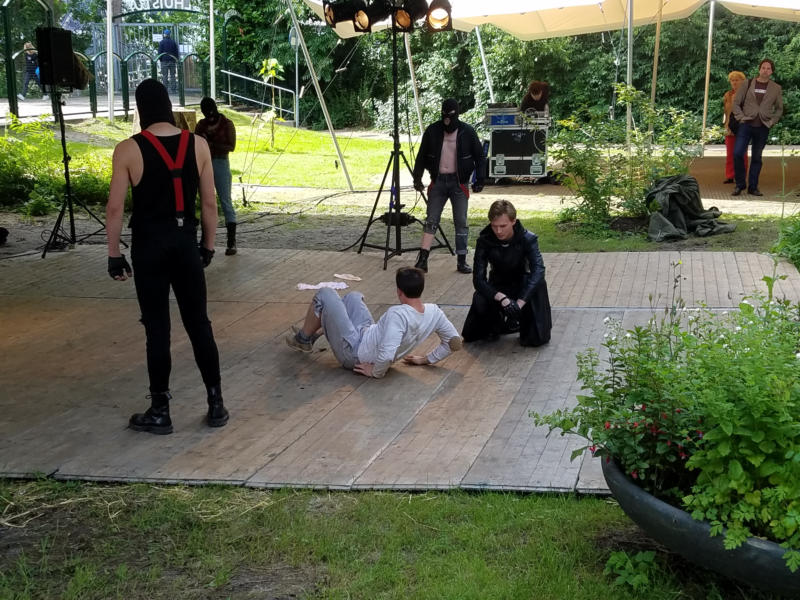
Latvian Academy, Riga, bring us Phaiacians. Rather than the purely theatrical techniques used by the others we have seen heretofore, this group share with us some cold, hard facts. Latvia is a country of 1.95 million people, and have accepted a mere 80 refugees. Even if they take their full allotment over the next decade, that is only 700, fewer than half of which are expected to wish to stay. The citizenry may be up in arms, but the country faces severe depopulation, having lost over 10% of the population in the years since the Iron Curtain fell.
The troupe scheme how to entice the refugees, represented by one young man, to stay. They compose little songs and practice being friendly. The song starts to take form, “Welcome to my country, here you don’t belong. Welcome to my country, here you can go wrong…” They eventually get it right, but the whole effect is to poke fun at the efforts by well meaning progressive forces to coax a reluctant populace to see the benefits of immigration.
Ask many people if they’re familiar with Homer’s Odyssey and they may say yes, but they probably only know the story of the Sirens. Odysseus has his men lash him to the mast of the ship, and then bung their ears with wadding, so they may safely traverse the shoals around the island of these temptress singing maidens. Odysseus becomes the only man to hear the Sirens’ song and survive to tell the tale. Thomas Bernhard Akademie, Salzburg, presents this island to us, with a mixture of dance, spoken word, song and music. It is keening and rich, overlaid with language in Arabic, Turkish, German, and English:
The history of the occident is also the history of tying down the body and the musicality of its languages and hence a history of bodies that get in panic when they are confronted with the otherness of the voice or the voice of the other.
This scene attempts a rhythmic-repetitive bodily and musicalized retelling of the triumph over the jeopardy of the voice…
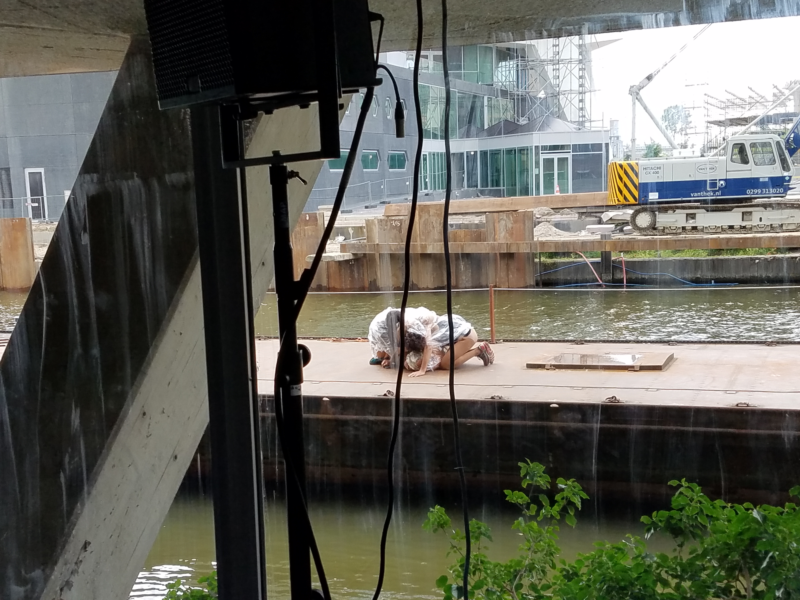
We watch all of this from a room fronting a canal, the performers on a barge, the musicians in the room with us, video screens providing various translation, full and partial.
Next up we are dragged by a frantic, jubilant woman, to a new space, her island. She is Circe. Erasmus Hogeschool/RITCS Brussels bring us a raucous and bawdy rendition of this island of lions, wolves and pigs. In this version we are serenaded by In-A-Gadda-Da-Vida and what amounts to a lurid and yet lyrical dance, which in turn tells us the story of debauchery offered and escaped. This was a truly stunning and unnerving interlude, and quite moving. Doesn’t seem to say much about modern Europe, or refugees, but that’s fine with me. We deserve a break!
Toneelacademie, Maastricht, next bring us Underworld. For this we are led to the mezzanine of a small studio theatre space, where we are looking down into a pit. This stunning piece uses a phalanx of video projectors, painting the floor and walls of this sunken chamber. Odysseus enters the underworld, represented here as a placid pool of water dotted with stepping stones, a small geometric island in the centre. When Odysseus steps onto a stone, the ripples he releases show us the lost souls trapped beneath the surface, tangled webs of bodies trapped in eternal struggle for rest. This is by turns disturbing and alluring.
I cannot even begin to describe just what a gift this revelatory experience was. It is immersive and voyeuristic, knowable and mysterious, beautiful and ugly, all at once. When Odysseus pulls Theresius from the lower depths, and they step out onto the water, the surfaces of this CGI disappear, and we are left only with the underlying mesh scaffolding upon which all of this imagery has been constructed. The effect untethers us, leaves us adrift without reference or anchor. It was profound.
The actors and the CGI are perfect together, bound to each other by 3D-scanner coordination, to great effect. I suspect we’ll see more of this in live performance, for it brings the promise of video augmented live performance to a level Pawn has certainly never seen before.
Return. No Odyssey is complete without return, right? That, after all, is what separates Odyssey from misadventure. Here we find return in a quiet glen, where Odysseus is first confronted by suspicious descendants of those left behind so many years ago. But he is eventually recognized, first by his loyal dog, and then by the rest, as who he is. Westerdal, Oslo, present this with masterful sound design and finely choreographed movement. It is triumphant!
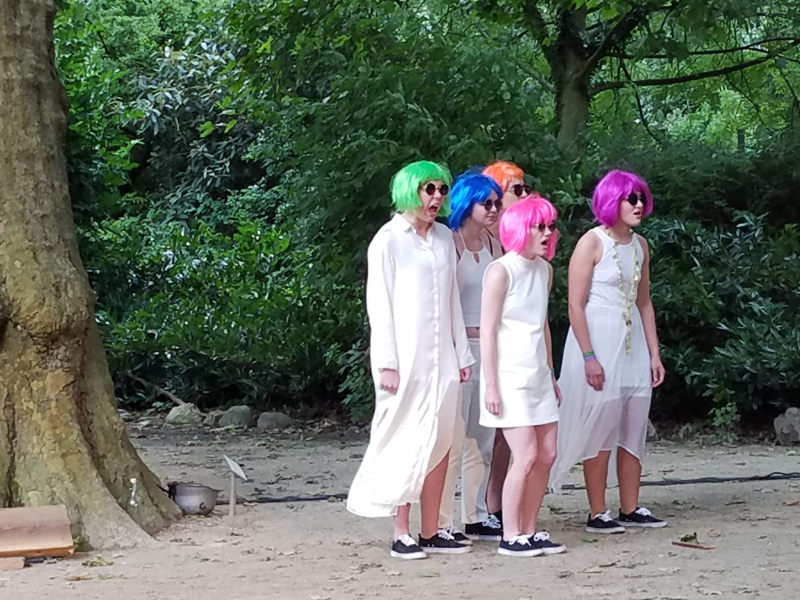
An undertaking of this scope and scale would be laudable in the best of times, but what makes this piece so extraordinarily suited to this time, to this moment, is the events of recent days. Not a week ago, even, England and Wales have dealt what could be a lethal blow to the European project. Last night, parties unknown deployed automatic weapons and suicide bombers in the Istanbul airport, killing 41 and injuring over 200. Funerals have already started and we don’t even have final casualty counts.
It is against this backdrop that these students have spoken, have sought a voice which says No! They want Europe, they love Europe. They embrace this ideal of shared cultural norms with separate histories and traditions.
One cannot experience this and not find hope for our future, regardless of the orange-haired monsters in our midst.
